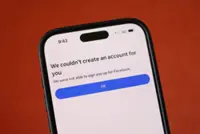The pattern of declining mental health by age group fits the growth in digital media use. Adolescents were the first to adopt and become absorbed by these technologies, young adults were second and prime-age adults were third. Mental health issues increased progressively with each age group beginning in 2015. — Image by Freepik
Shock. That is the only way to describe my reaction to the deterioration of teen mental health documented by prominent local researcher Jean Twenge.
She is a professor at San Diego State University, a number cruncher who makes sense of information gleaned from myriad studies, polls and statistics gathered by government health agencies, universities and other sources.
Already a subscriber? Log in
Save 30% OFF The Star Digital Access
Cancel anytime. Ad-free. Unlimited access with perks.





